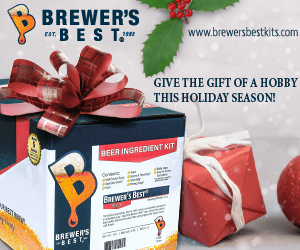Dry Hops in a Narrow-Neck Carboy
Q: I have a specific question about single fermentation dry hopping in narrow-mouth glass carboys. I like to dry hop my NEIPA in two stages: One around three days into fermentation and the second addition around day 8. If I don’t want to leave my first batch of three or so ounces (~85 g) of dry hops in my carboy, how can I get them out? Using hop bags is difficult with the narrow mouth of glass carboys. Or is it OK to simply leave the hops in for 10–12 days?
— Menno van Burken • Manchester, Vermont
A: There are some problems best solved by changing tools. The easiest way to add and remove hop bags to a carboy is to use the types with large openings. Just guessing that’s not the reply you were seeking! Another approach is to put your hop pellets in an over-sized hop bag to allow plenty of room for expansion and movement within the bag; before putting the bag in your narrow-mouth carboy, tie a piece of fishing line to the bag so you can pull the bag out of the beer (and maybe out of the carboy) at the right time. If the bag is too large to easily pull from the carboy, simply tie your line to the neck of the carboy and let the hop bag hang above the beer level until you have racked your beer when it’s easier to wrangle the bag out.
I understand the desire for simplicity, but there are times when investing in new equipment, like a carboy with a wide mouth, or adding another step, like racking from one carboy to another carboy (or keg), is likely to improve your beer. Leaving dry hop additions in contact with beer for prolonged time periods is one of those practices that often results in less-than-stellar beer with grassy/green-tea/vegetative and astringent hop flavors. Method aside, avoiding these flavors in NEIPAs is generally a good thing.


